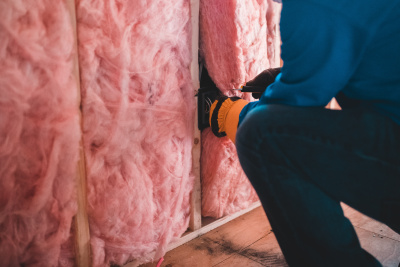What Is Insulation R-Value?
The capacity of a substance to withstand the transport of heat is what is primarily measured by the insulation R-value. It is a scale between 1 and 10 (or higher depending on the type of insulation material used) that is used to represent the efficacy of insulation materials. The more successful an insulating material is at limiting heat transmission and energy loss, the greater its R-value.
The R-value is a measurement used in the building industry to describe how successfully a two-dimensional barrier, such as an insulating layer, a window, or an entire wall or ceiling, resists the conduction of heat. The temperature differential per unit of heat flux required to maintain one unit of heat flow between a barrier's warmer and cooler surfaces under steady-state circumstances is known as the R-value. Therefore, the approach is equally significant for reducing energy expenses for winter heating, summer cooling, and general comfort.
Thermal resistance "per unit area" is referred to by the construction industry term "R-value". If SI units are used, it is occasionally referred to as RSI-value. A material's R-value or a material assembly's R-value (for a wall or a window) can be provided. Materials are frequently described in terms of R-value per metre. For layers of materials, R-values are additive, and the greater the R-value, the better the performance.
How Do R-Values Compare for Types of Insulation?
There are several options to be made about insulation when building a new house, including which type is appropriate for the floors, walls, crawlspaces, and roof. The loft is the ideal place to start for most individuals who want to increase the insulation in their current house, though. In contrast to insulating the walls or floors, which is frequently labour-intensive, boosting the insulation in your loft is a relatively non-invasive technique to help your home retain heat. Additionally, the majority of heat is lost through the roof, therefore enhancing loft insulation is the most cost-effective way to stop heat loss.
Fibreglass insulation typically has an R-value of 2.2 to 3.8, while rigid foam insulation can have R-values of up to 7. Polyurethane spray foam has an R-value of 6 to 8 per inch of thickness, and cellulose insulation has an R-value of 3.7 to 3.8 per inch of thickness. In comparison, natural wool insulation has an R-value of 3.3 to 4.0 and is an excellent choice for soundproofing and insulating against air infiltration.

Need assistance finding loft insulation near you?
Get a QuoteHow Much R Value Should Insulation Have?
The Department of Energy maintains a map that displays the intended R-value range for various geographic areas of the nation. In many areas of the country, homeowners may get away with applying less R-value insulation. You will require a varying R-Value depending on where you reside and the areas of your home (walls, crawlspace, loft, etc.) that you are insulating. R-13 through R-23 are usually suggested for exterior walls, whereas R-30, R-38, and R-49 are typically used for ceilings and loft spaces. Below is a list of the recommended insulation level ranges from the Department of Energy (DOE).
Apparent R-Value
Thermal conductivity, which evaluates how easily a material conducts heat, affects a substance's R-value; nevertheless, the R-value of a material rises with thickness. Convection and radiation are two ways other than conduction that can contribute considerably to heat movement within a material. In these cases, including an "apparent thermal conductivity" that accounts for the impacts of all three types of processes and defining the R-value more generally as the thickness of a sample divided by its apparent thermal conductivity is useful.
This generalisation, however, comes at a cost because R-values that incorporate non-conductive processes may no longer be additive and may be temperature dependent. For example, the R-value per inch of a loose or porous material typically relies on thickness. For similar reasons, the R-value per inch of the material varies with temperature, typically rising with decreasing temperature (polyisocyanurate being an exception); a supposedly R-13 fibreglass batt may be R-14 at 12 °C (10 °F) and R-12 at 43 °C (109 °F). Nonetheless, it is typical in construction to regard R-values as temperature independent.
U-Value
The total heat transfer coefficient, or U-factor, is defined as the rate of heat transmission (in watts) over one square metre of a structure divided by the change in temperature across the structure. The sections that makeup walls, floors, and roofs are examples of the numerous layers of components that make up the elements. The unit of measurement is watts per square metre of kelvin, or W/(m2K). This implies that when the U-value increases, the thermal performance of the building envelope decreases. Low U-values are typically indicative of high insulation levels; they are valuable because they may be used to forecast the composite behaviour of an entire building section rather than depending exclusively on the properties of individual components.
In conclusion, understanding the insulation R-value is key to assessing the effectiveness of an insulation material. It's important to note that different types of insulation materials provide different thermal resistance, so selecting the appropriate one for your application is essential. Additionally, the installation of the material can affect its performance, so regular maintenance and inspection should be carried out to ensure peak efficiency.
In this article:
